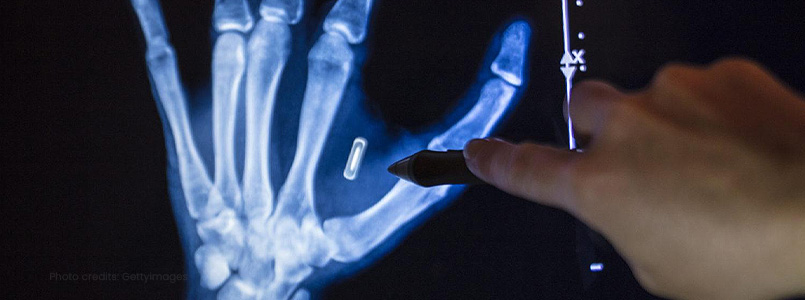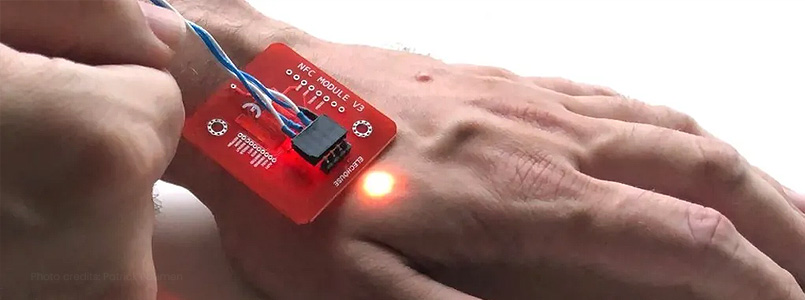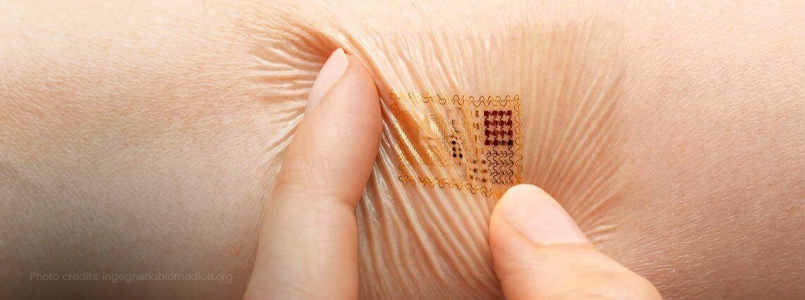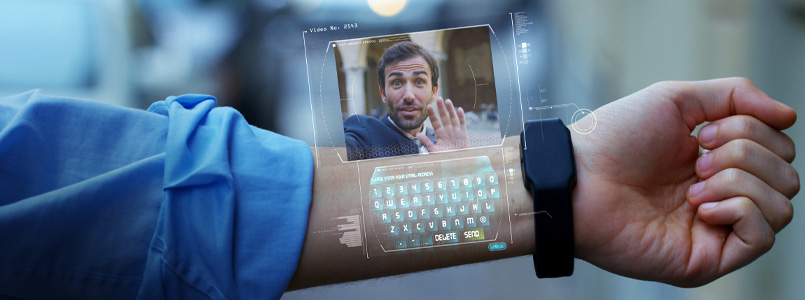
From Wearables to Implantables: The Rise of Invisible Technology
It all began with simple, clunky pedometers tracking steps and hearing aids enhancing sound, humble beginnings that hinted at the potential of wearable technology. Over time, these devices evolved, becoming smarter, sleeker, and more integrated into our daily lives. Today, we stand at the threshold of a revolutionary era where technology doesn't just sit on our wrists or in our ears; it seamlessly blends into our bodies. Implantable and invisible technologies are taking the lead, redefining how we interact with the world, manage our health, and enhance human capabilities in ways once thought to be science fiction.
The Evolution of Wearable Technology

Wearable technology has come a long way from the clunky pedometers and heart rate monitors of the past. Today, sleek smartwatches, fitness trackers, and augmented reality (AR) glasses have become everyday essentials for millions. These devices not only track physical activity but also measure biometrics like heart rate, blood oxygen levels, and even stress patterns. In the healthcare sector, wearables play a pivotal role in the early detection of diseases, remote patient monitoring, and chronic illness management.
The success of wearable technology lies in its ability to blend seamlessly into our lives. Devices like the Apple Watch, Fitbit, and Whoop strap have set a benchmark for style, functionality, and user-friendliness. But as the demand for less intrusive and more personalized technology grows, the industry is venturing into uncharted territory: implantable technology.
The Rise of Invisible Technology

Invisible technology refers to devices that integrate so seamlessly with the human body that they become virtually undetectable. Implantable technology takes this concept to the next level by embedding devices directly into the body, offering unparalleled convenience, precision, and functionality. Imagine a glucose monitor that continuously tracks your levels without requiring a separate device or a chip that unlocks your car with a wave of your hand. These are no longer futuristic fantasies but realities being developed today.
Key Drivers of Implantable Technology

Advancements in Miniaturization
The miniaturization of electronics has enabled the creation of implantable devices small enough to fit inside the human body without discomfort. Microchips, nanosensors, and bioengineered materials make it possible to design devices that can operate efficiently while being barely noticeable.
Biocompatibility and Safety
Modern implantables are designed with materials that are biocompatible, reducing the risk of rejection or infection. Innovations like bioresorbable implants, which dissolve harmlessly after serving their purpose, are pushing boundaries in medical applications.
Internet of Bodies (IoB)
Building on the concept of the Internet of Things (IoT), the Internet of Bodies refers to the network of devices that monitor and interact with the human body. Implantable devices can seamlessly integrate with IoB systems, allowing for real-time data analysis and remote control by medical professionals or users themselves.
Implantable Technology in Healthcare

Healthcare is arguably the most promising application of implantable technology. Here are some groundbreaking examples:
- Cardiac Implants: Pacemakers and defibrillators have long been used to regulate heart rhythms. Modern versions now come equipped with Wi-Fi capabilities, allowing doctors to monitor patients remotely.
- Neural Interfaces: Devices like Elon Musk's Neuralink aim to connect the human brain directly to computers, potentially aiding in the treatment of neurological disorders, paralysis, and even memory loss.
- Glucose Monitors: Implantable glucose sensors like the Eversense Continuous Glucose Monitoring (CGM) system provide long-term, accurate blood sugar readings without the need for frequent finger pricks.
- Drug Delivery Systems: Smart implants can deliver medication directly to targeted areas in the body, minimizing side effects and maximizing effectiveness. For instance, bioresorbable implants can release chemotherapy drugs directly at tumor sites.
Beyond Healthcare: Implantables in Everyday Life

While healthcare is the most obvious beneficiary, implantable technology is making its way into everyday life. Here are some fascinating examples:
- Digital Identity: Microchip implants can store personal information, allowing users to unlock doors, access digital devices, or even make payments with a simple gesture.
- Enhanced Senses: Implantable devices can enhance human senses. For example, cochlear implants restore hearing, while retinal implants can potentially improve vision for the visually impaired.
- Fitness and Performance: Athletes are experimenting with implants to optimize performance by tracking muscle strain, hydration levels, and other metrics in real time.
- Augmented Reality: Implantable AR devices could revolutionize entertainment, education, and work by overlaying digital information directly onto the user's field of vision.
Ethical and Privacy Concerns

The rise of implantable technology brings with it a host of ethical and privacy challenges. Who owns the data generated by these devices? How can we ensure that the technology is not misused by employers, insurers, or governments? And what happens if an implantable device is hacked?
These concerns highlight the need for robust regulations and ethical guidelines. Transparency, informed consent, and rigorous security protocols will be crucial to building public trust in this emerging field.
The Future of Wearable and Implantable Technology

The journey from wearable technology to implantable devices is just beginning. Here are some trends to watch:
- Hybrid Devices: Transitional devices that combine the convenience of wearables with the precision of implantables are likely to emerge. For instance, semi-implantable systems that interact with wearable components.
- AI Integration: Artificial intelligence will play a critical role in analyzing the vast amounts of data generated by implantable devices, providing actionable insights and personalized recommendations.
- Customization: As technology advances, implantables will become highly customizable, tailored to individual needs and preferences.
- Cost Reduction: Like all technology, implantables are expected to become more affordable over time, making them accessible to a broader audience.
Final Thoughts

The transition from wearable technology to implantables marks a significant milestone in the evolution of human-computer interaction. These innovations promise to enhance our lives in ways we can only begin to imagine, from improving healthcare outcomes to redefining how we interact with the world around us. However, as we embrace this new frontier, it’s essential to address the ethical, privacy, and security concerns that come with it.
As invisible technology becomes a visible part of our future, one thing is certain: the line between human and machine will continue to blur, offering new opportunities and challenges in equal measure. The age of implantables is not just coming; it’s already here.

